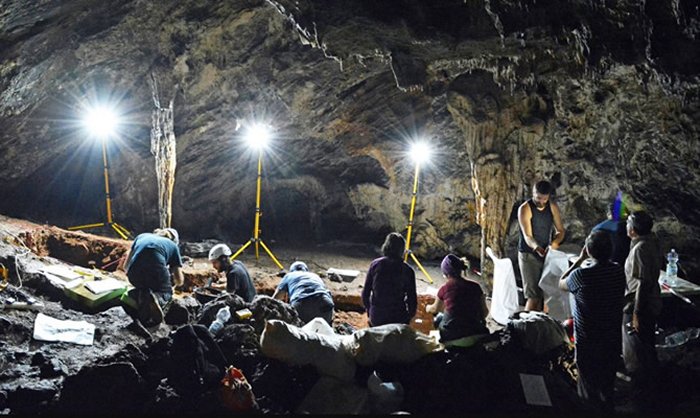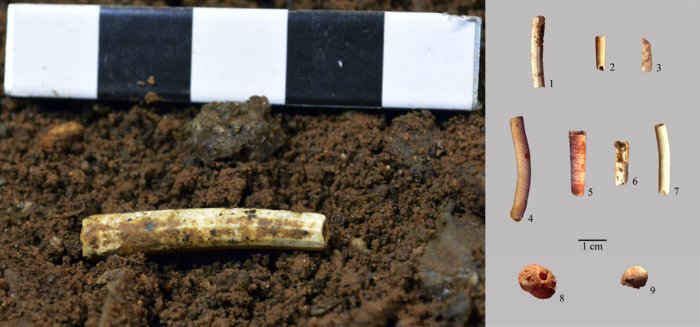Jan Bartek – AncientPages.com – Scientists have discovered that shells were essential to our ancient ancestors on several occasions. Shells are one of the oldest ways humans have adorned and expressed themselves, with examples of deliberately-collected shell ᴀssemblages at human sites dating as far back as 160,000 years ago found across North Africa, South Africa, and the Eastern Mediterranean. There is evidence ancient humans deliberately collected perforated shells to string them together like beads 120,000 years ago.

Researchers in the Cueva de Ardales. Credit: University of Cadiz.
Some unusual artifacts unearthed in Grotta dei Moscerini cave, located about 10 feet above a beach in what is today the Latium region of central Italy, revealed the Neanderthals dived into the cool waters of the Mediterranean Sea to gather clam shells.
In a recent study, scientists from the University of Cadiz reported they found evidence ancient humans used shells as body ornaments 30,000 years ago. In a press statement, the science team stated that the discovery resulted from research in collaboration with the Neanderthal Museum of Colonia, the University of Colonia, and the Cueva de Ardales.
In Malaga’s Cueva de Ardales, scientists came across up to 13 marine and freshwater shells that humans carefully transformed into ornamental elements-pendants to decorate the bodies between 25,000 and 30,000 years ago.
Body adornments are a topic of great interest among the scientific community, especially the practice during the Paleolithic period. The symbolic charge and the distance that, at times, human groups had to travel to collect these natural supports and transform them into decorative elements represented a significant advance in the development of cognition.
“The discovery of this type of marine remains in caves located so far inland and with such ancient chronologies is unusual,” Juan Jesús Cantillo, a professor at the University of Cádiz, and the principal investigator of this study, explained.
Until now, on the Mediterranean side of the country, only a little more than 100 remains are known, and: “all of them are located on the coast. The inhabitants of the Ardales cave, however, had to travel a distance of more than 50 km to collect the shells on the coast”, added Professor José Ramos.

Shells found in Cueva de Ardales. Credit: University of Cadiz.
Also noteworthy was: “the presence of vermetids, a kind of tube-shaped snail that is uncommon in the archaeological record,” stressed Jesús Cantillo.
These ornamental elements-pendants were probably used to decorate the bodies of the genus Homo sapiens that occupied the cave complex in the past.
See also: More Archaeology News
The chronological framework and the ᴀssociation of these ornaments with rock art and the lithic remains documented inside the cave confirmed their social dimension.
“The results of the excavations in the Cueva de Ardales suggest that it was used as a place of specialised symbolic activities during various phases of the Upper Paleolithic”, confirmed Pedro Cantalejo, research director of the Cueva de Ardales.
Written by Jan Bartek – AncientPages.com Staff Writer





